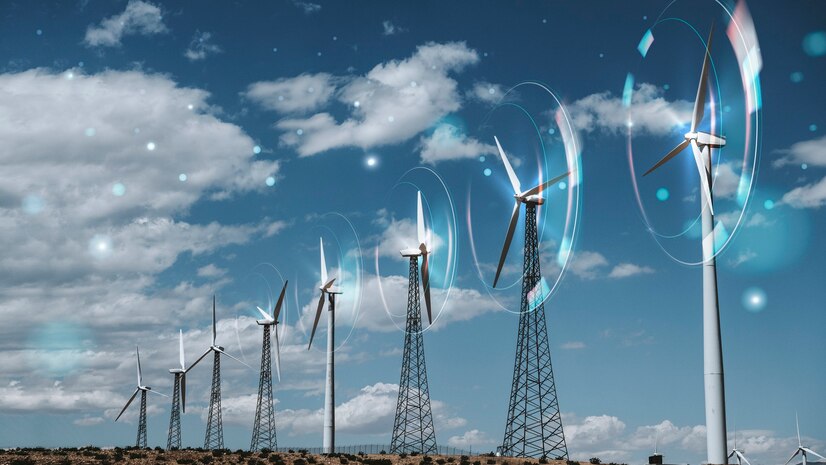As the world continues to move towards cleaner energy sources, wind energy integration into the electrical grid has become a vital area of focus. The integration of wind power not only helps to meet growing energy demands but also plays a crucial role in reducing carbon emissions. However, successfully incorporating wind energy into existing grid systems involves overcoming a range of challenges. Understanding these challenges and benefits is key to ensuring that wind energy can be used more efficiently on a global scale.
Understanding Wind Energy Integration
Wind energy integration refers to the process of incorporating wind power into a power grid, ensuring that wind-generated electricity can be used efficiently and reliably alongside other energy sources. Wind energy, being a renewable resource, offers enormous potential for reducing reliance on fossil fuels, but it also presents unique challenges for grid operators. One of the primary difficulties is managing the variability and intermittency of wind power, which can fluctuate based on weather conditions.
Challenges of Wind Energy Integration
- Intermittency and Variability One of the main challenges of wind energy integration is the unpredictable nature of wind. Wind speeds can vary throughout the day and across seasons, leading to fluctuations in the amount of energy produced. This intermittency means that wind energy cannot always be relied upon to meet electricity demand, particularly when the wind is not blowing.
- Grid Stability and Reliability Integrating wind energy into the grid requires maintaining the stability and reliability of the overall electricity system. The grid must be capable of accommodating fluctuating levels of wind power without compromising the stability of the power supply. This requires advanced grid management techniques, including real-time monitoring and dynamic response capabilities to adjust for changing wind conditions.
- Energy Storage Solutions Another challenge in wind energy integration is the need for effective energy storage solutions. Wind energy may be generated during periods of low demand, but it is essential to store this energy and use it when demand is higher. Advances in battery storage and other energy storage technologies are vital for enabling the smooth integration of wind energy into the grid.
Benefits of Wind Energy Integration
Despite the challenges, the benefits of wind energy integration are significant. Here are some of the key advantages:
- Reduction in Carbon Emissions Wind energy is a clean, renewable source of power that produces no greenhouse gas emissions. By integrating more wind energy into the grid, we can reduce the reliance on fossil fuels, which are major contributors to climate change. Wind energy plays an essential role in achieving global sustainability goals and transitioning to a low-carbon economy.
- Diversification of Energy Sources Integrating wind energy helps diversify the energy mix, making the grid less reliant on traditional energy sources such as coal, oil, and natural gas. This not only increases energy security but also promotes the development of a more resilient and sustainable energy system. A diversified energy portfolio is less vulnerable to supply disruptions and price volatility associated with fossil fuels.
- Job Creation and Economic Growth The wind energy sector is a growing industry that creates numerous jobs in manufacturing, installation, operation, and maintenance. As more countries invest in wind energy projects, the number of jobs in the renewable energy sector continues to rise. This leads to economic growth, particularly in regions that have the potential to become leaders in wind power generation.
- Support for Energy Independence Wind energy can help countries achieve greater energy independence. By harnessing local wind resources, nations can reduce their dependence on imported fossil fuels, thereby enhancing their energy security. This is particularly important in regions that are heavily reliant on external sources for their energy needs.
The Role of Smart Grid Technology in Wind Energy Integration
To effectively manage the challenges of wind energy integration, smart grid technology is playing an increasingly important role. Smart grids use advanced communication and automation systems to monitor and manage the flow of electricity in real-time. These systems enable utilities to balance the supply and demand for electricity, even when the availability of wind power is uncertain.
Smart grid technologies also help with the integration of other renewable energy sources, such as solar power, by coordinating the input from multiple sources. With the growing adoption of smart meters and sensors, grid operators can gain better visibility into energy consumption patterns, allowing for more efficient management of renewable energy.
Wind energy integration is a critical component of the global transition to clean, sustainable energy. While the challenges, such as intermittency and grid stability, are real, the benefits of incorporating more wind power into our energy systems far outweigh the difficulties. With ongoing advancements in grid management, energy storage, and smart grid technologies, the future of wind energy integration looks promising. As countries continue to invest in renewable energy, wind power will play an increasingly important role in powering our homes, businesses, and industries, all while reducing carbon emissions and fostering a cleaner, more resilient energy future.




